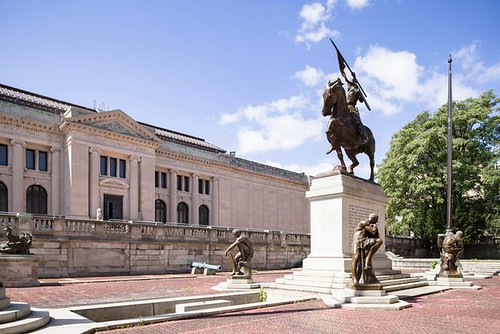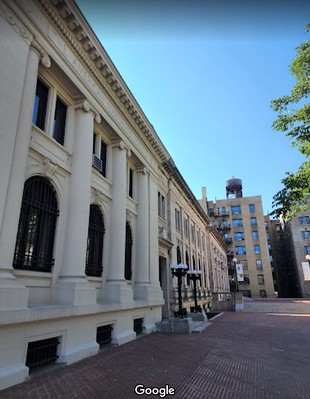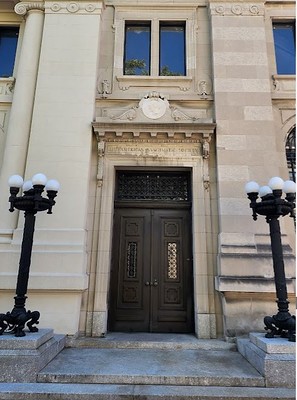
PREV ARTICLE
NEXT ARTICLE
FULL ISSUE
PREV FULL ISSUE
ANS OLD NEIGHBOR HISPANIC SOCIETY REOPENSWhile the American Numismatic Society has long since moved from its upper Manhattan building, its neighbor on the plaza (and fellow beneficiary of the largesse of collector Archer M. Huntington) has recently been renovated. The Wall Street Journal published two articles this week with some background on the buildings. -Editor The partial reopening of the Hispanic Society Museum & Library last week as part of a continuing renovation was an auspicious event. With one of the finest collections of its kind in the country, it offers both superb Old Master paintings and an innovative interpretation of literary and visual culture that was unique at the institution's founding and remains impressive today. The Hispanic Society, established in 1904 by the American scholar and collector Archer M. Huntington as a center for the study of Spanish, Portuguese and Latin American art and culture, is a little-known jewel located in New York's Washington Heights. It is currently in the midst of an ambitious project to upgrade its three landmark buildings and restore Audubon Terrace, where it sits.
Unusual for an institution reopening after a period of dormancy, the Hispanic Society has chosen not to display some of the foremost gems of its collection, paintings by El Greco, Velázquez, Zurbarán and Goya. These recently returned from a lengthy The connection to the ANS building comes in the second article about the Hispanic Society restoration. -Editor The Hispanic Society was founded in 1904 by Archer M. Huntington, whose family's railroad fortune gave him free rein to indulge his love of Spanish art and literature. Believing that the public should have access to his private collection, he found a site at 155th Street and Broadway in New York's then fashionable Washington Heights. There he built the superb museum and library that is one of New York's triumphs of Renaissance Revival architecture. The vast architectural ensemble on which the Hispanic Society sits is itself somewhat accidental. Huntington built his museum and library as a freestanding object on a terrace, a jewel box in a park. But no sooner had he completed his museum than he was coaxing other institutions, on several of whose boards he sat, to join him. He would give them building sites on condition that they build within five years and on plans approved by him. The first two were built in 1909, the Numismatic Society to the west and the American Geographical Society across the terrace to the north. The Museum of the American Indian followed in 1916, adjoining the Hispanic Society to the east. The last to build was the American Academy of Arts and Letters, added to the far west of the terrace in 1921. It is perhaps the largest collection of learned societies ever to be shoehorned onto a city block. All of these buildings, except for the American Academy, were designed by Charles P. Huntington, Archer's cousin. (He also designed Our Lady of Esperanza, built to give the complex a Catholic church in which Spanish was spoken.) They have an exquisite visual unity that comes from their construction in Indiana limestone, their continuous cornice height and the repetition of the colossal Ionic order. Arrayed on a monumental axis over 500 feet in length, they represent the urbanism of the City Beautiful at its best. Or rather would have, if the axis actually led somewhere. By the time Huntington realized he was building a cultural acropolis, developers had taken the parcel at the west end of his site. Rather than pointing majestically to the Hudson and the Palisades beyond, his formal ensemble leads to the 11-story Riviera apartments, at whose unlovely brick buttocks its heroic axis dies. Beginning in the 1980s, most of the cultural institutions pulled up stakes and moved elsewhere. But this presented the Society with an opportunity. It could now expand eastward into the former Museum of the American Indian (whose collections had been transferred to the Smithsonian). Here it will be able to display more of its permanent collection, the bulk of which is in storage, but also have room for temporary exhibitions. Google Maps has a few photos of the ANS building taken in 2022. Who owns the building today? -Editor
To read the complete articles (subscription required), see:
To view the Google photos, see:
THE BOOK BAZARREWayne Homren, Editor The Numismatic Bibliomania Society is a non-profit organization promoting numismatic literature. See our web site at coinbooks.org. To submit items for publication in The E-Sylum, write to the Editor at this address: whomren@gmail.com To subscribe go to: https://my.binhost.com/lists/listinfo/esylum All Rights Reserved. NBS Home Page Contact the NBS webmaster 
|


